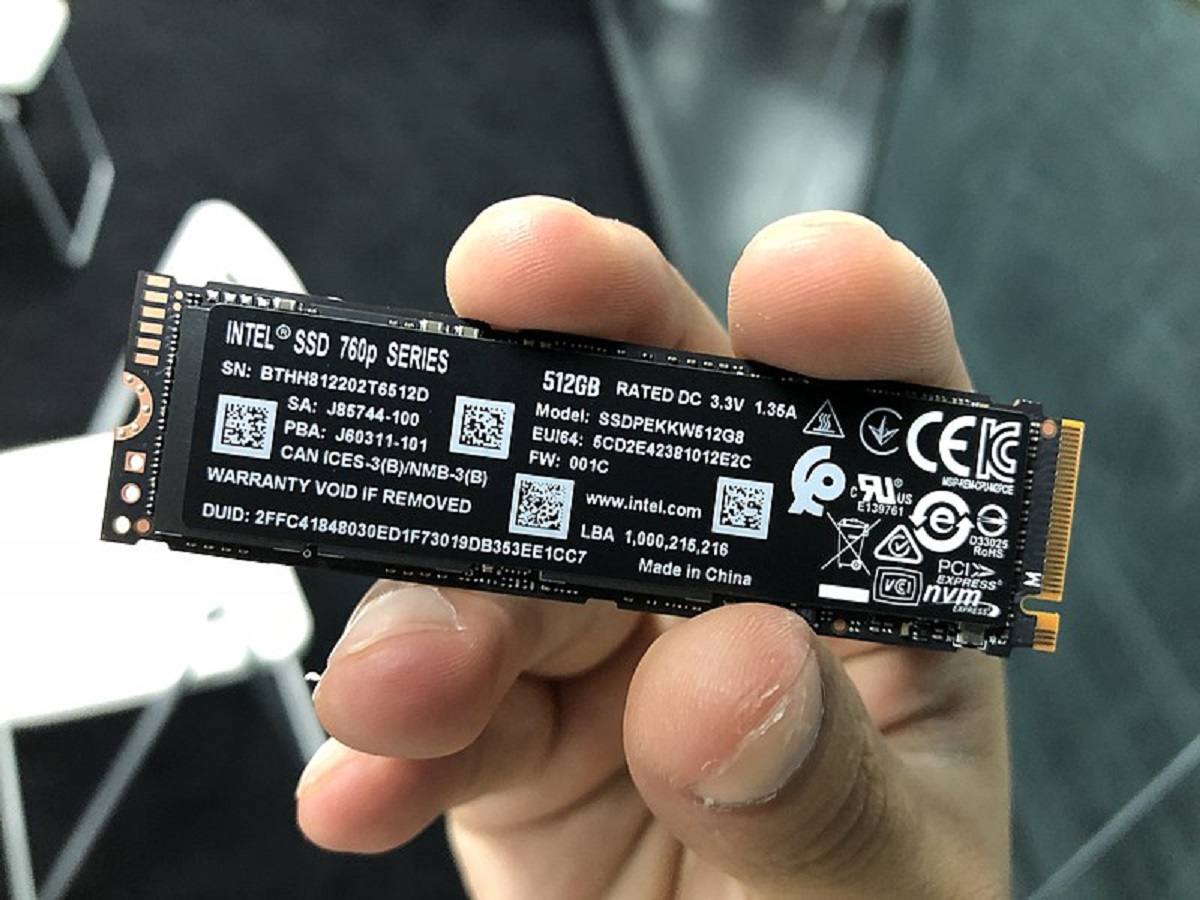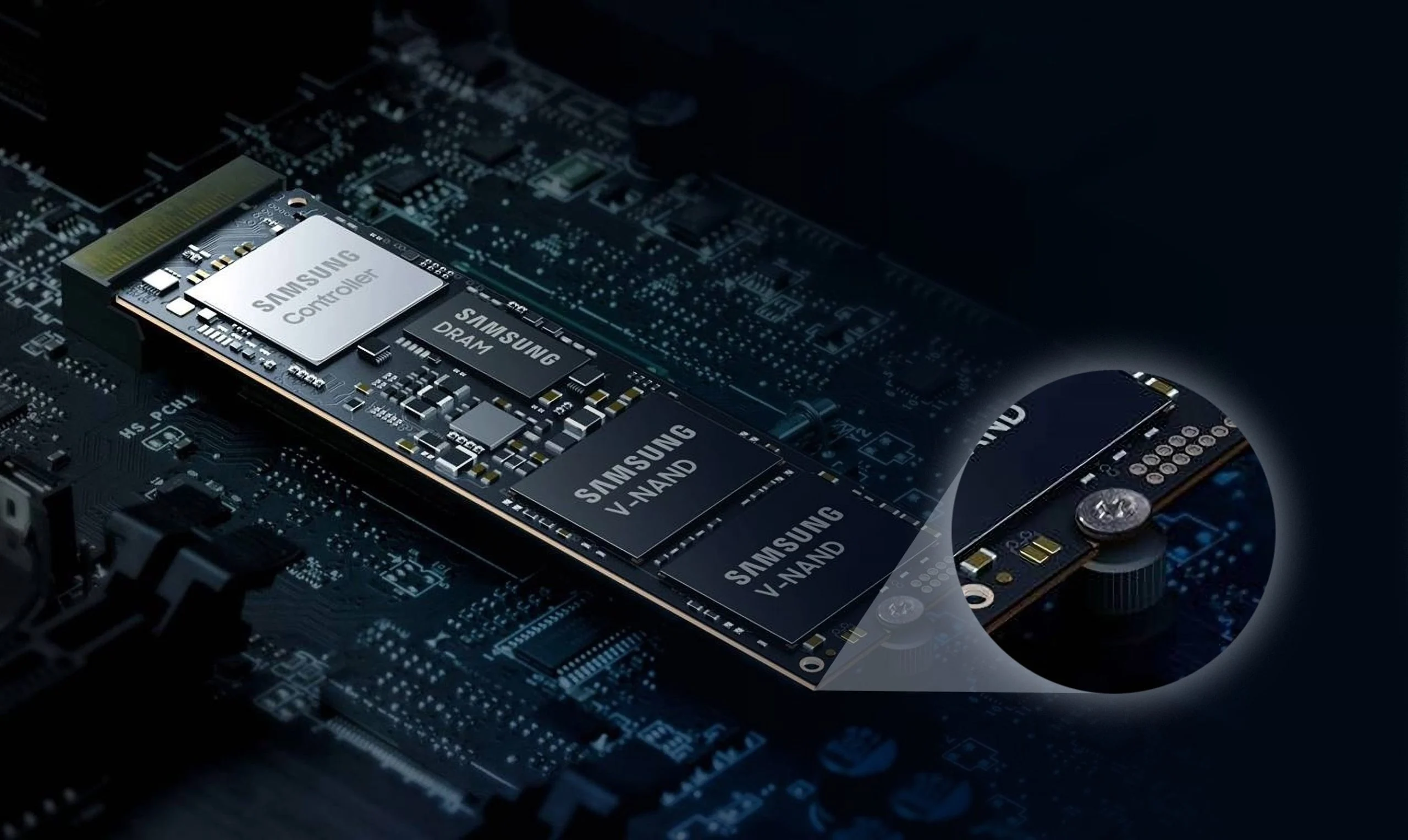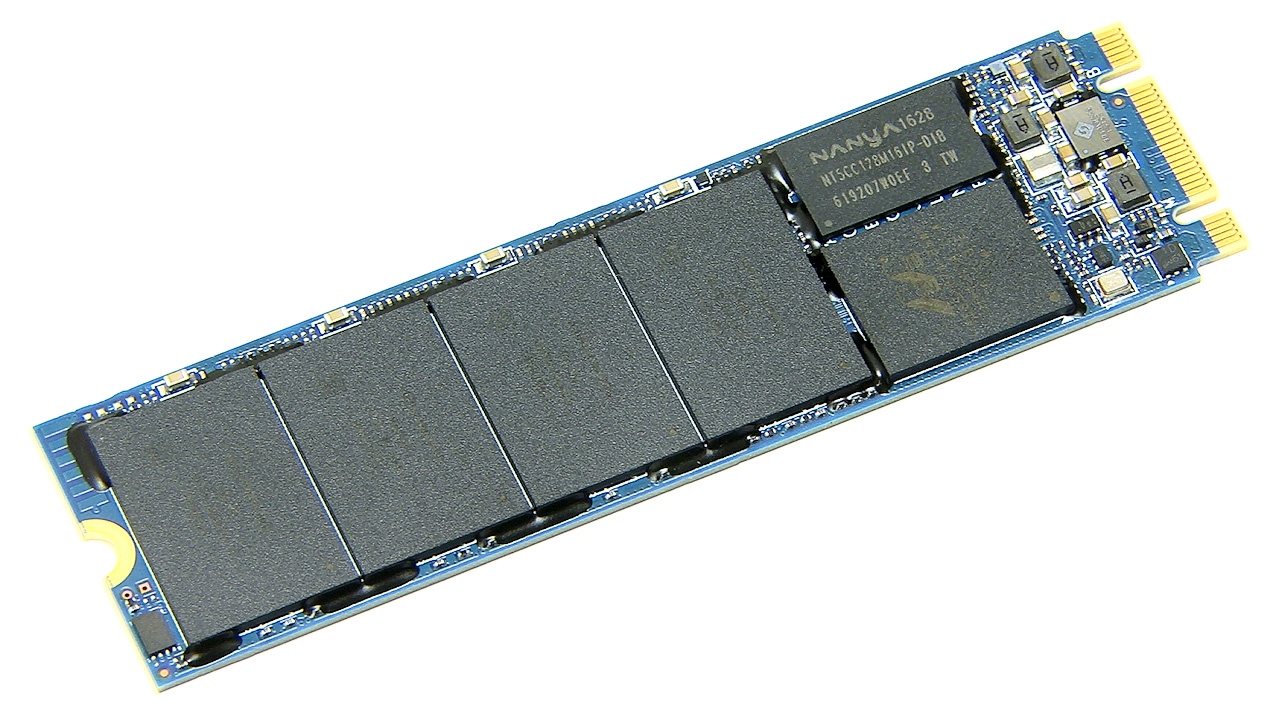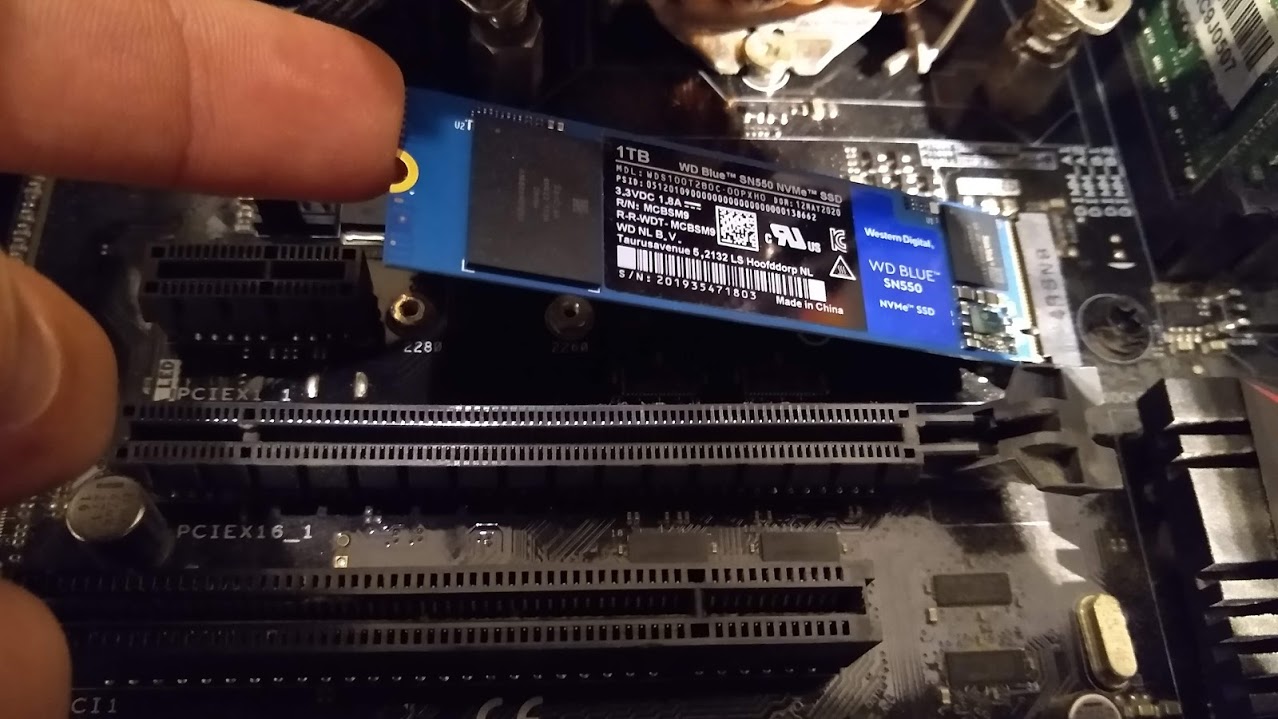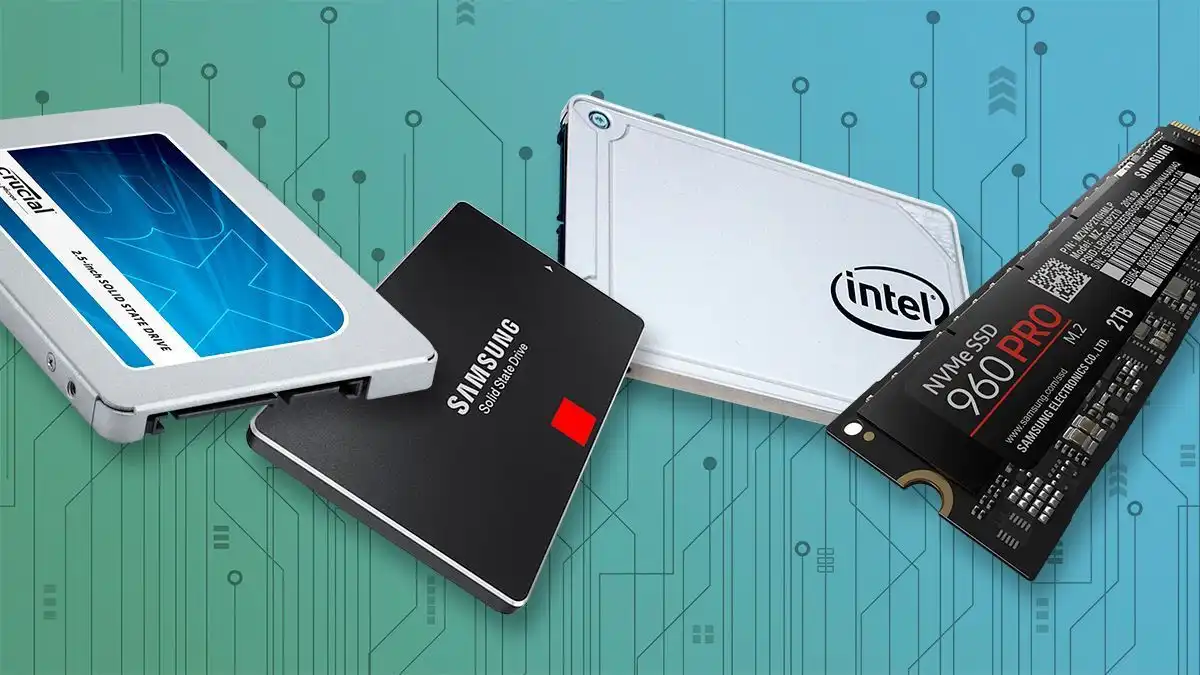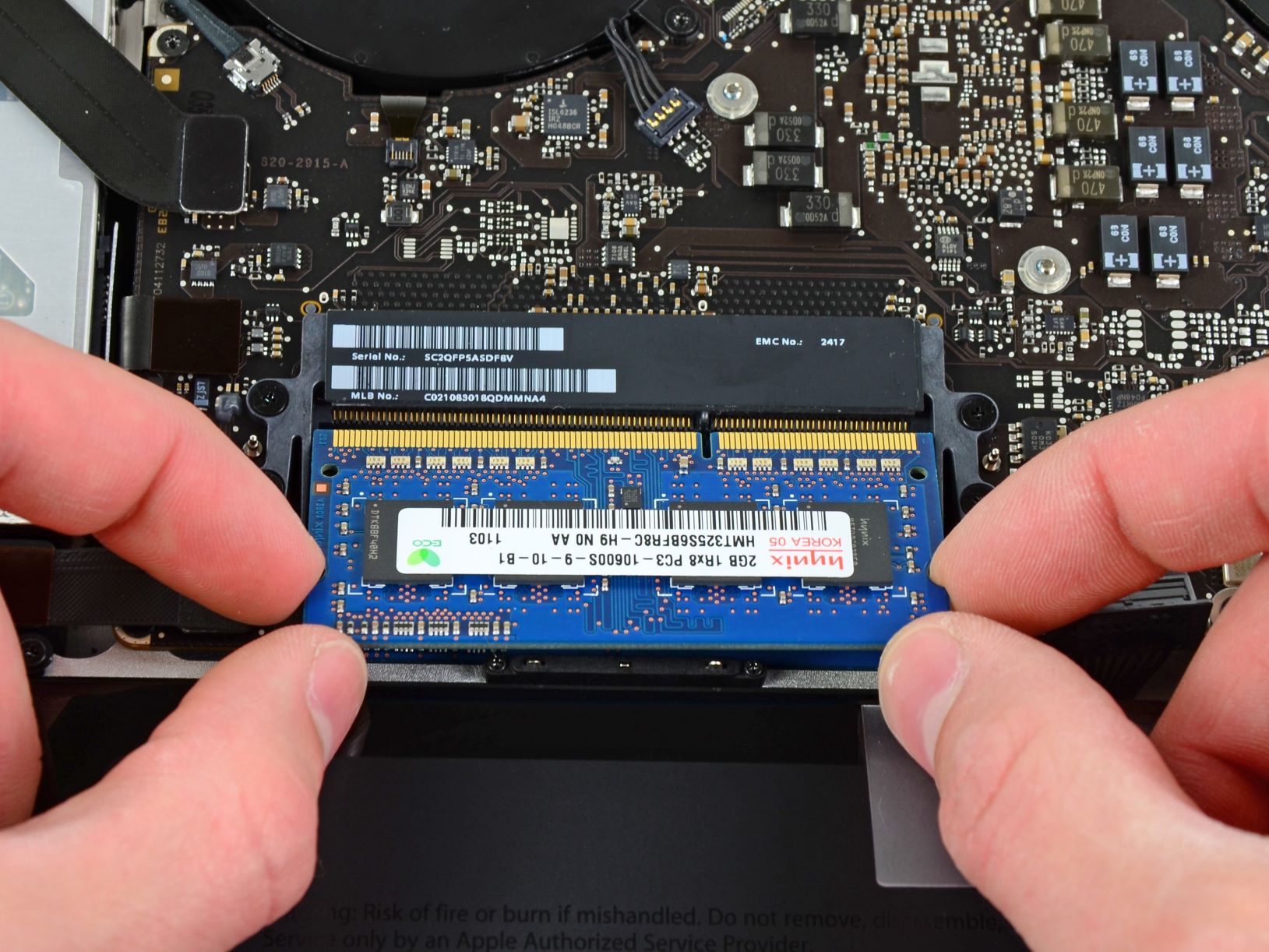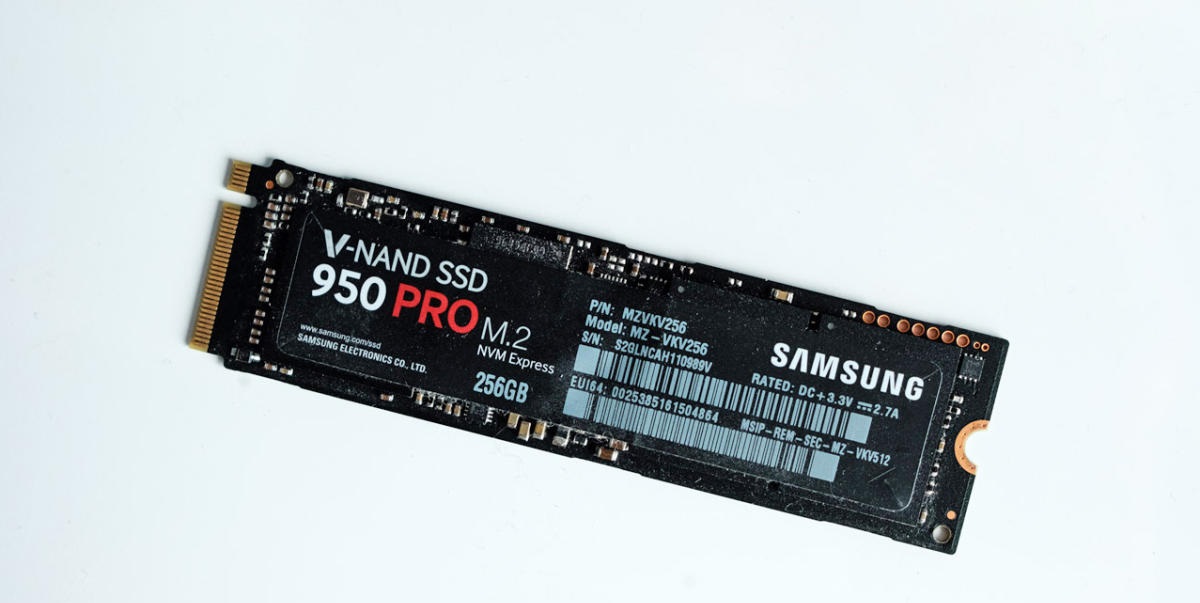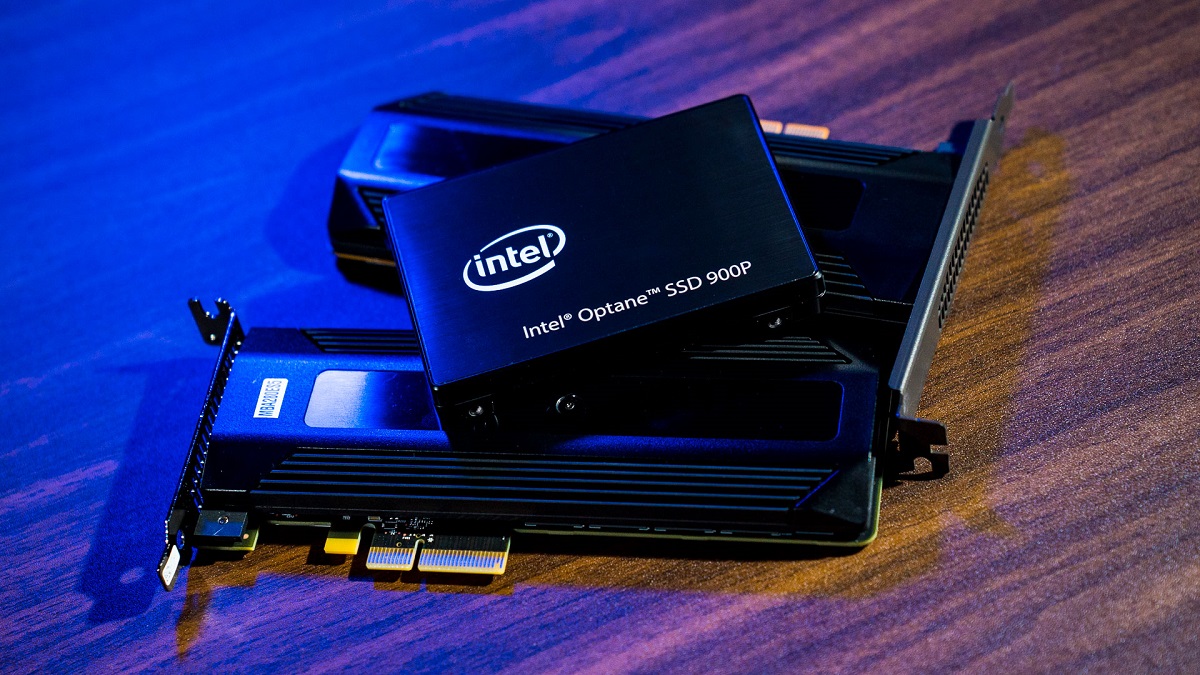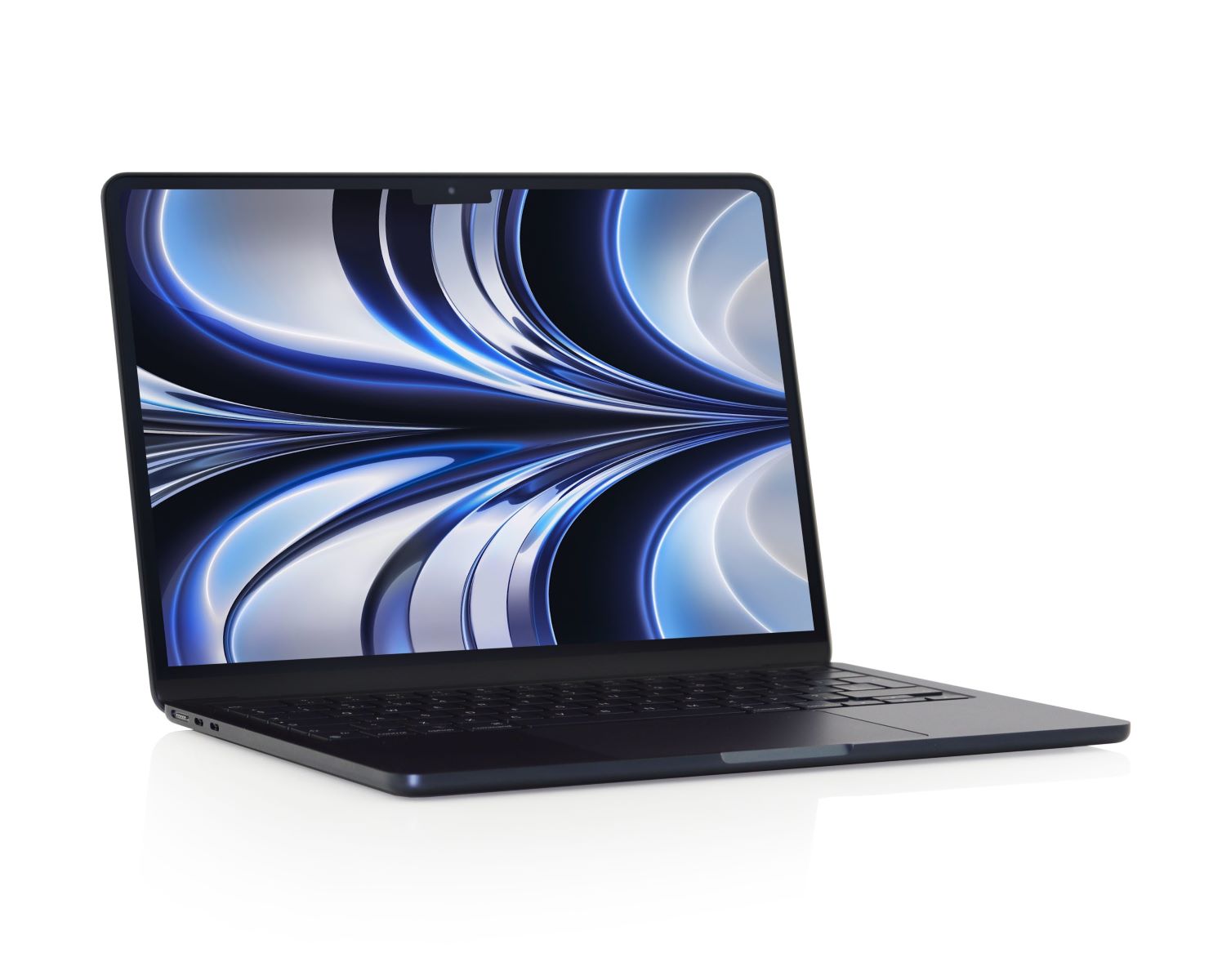Introduction
Welcome to the world of M.2 SSDs! As technology continues to evolve, the demand for faster and more efficient storage solutions has become paramount. M.2 SSDs have emerged as a popular choice among users looking to enhance the performance of their devices. With their compact form factor and lightning-fast speeds, M.2 SSDs offer an impressive storage solution for gamers, content creators, and everyday users alike.
Whether you’re building a new gaming rig, editing high-resolution videos, or simply looking to boost the overall speed of your system, choosing the right M.2 SSD is crucial. In this article, we will explore the key factors to consider when purchasing an M.2 SSD and provide recommendations for different use cases and budgets.
Before we dive into the specifics, it’s important to understand exactly what an M.2 SSD is. M.2 stands for “Next-Generation Form Factor,” and it refers to the shape and size of the SSD. Unlike traditional 2.5-inch SSDs, M.2 SSDs are much smaller and connect directly to the motherboard, eliminating the need for cables.
One of the key advantages of M.2 SSDs is their speed. These drives utilize the NVMe (Non-Volatile Memory Express) protocol, which allows for significantly faster data transfer rates compared to traditional SATA SSDs. NVMe M.2 SSDs can offer read and write speeds that are several times faster, resulting in quicker boot times, faster loading screens, and improved overall system responsiveness.
Furthermore, M.2 SSDs come in various storage capacities, ranging from 128GB all the way up to 2TB or more. This flexibility allows users to choose the size that best suits their needs, whether it’s for storing a large gaming library or managing extensive multimedia files.
With the basics covered, let’s now explore the various factors to consider when buying an M.2 SSD. By understanding these factors, you’ll be equipped with the knowledge to make an informed decision and select the perfect M.2 SSD for your specific requirements.
Understanding M.2 SSDs
Before diving into the world of M.2 SSDs, it’s important to have a clear understanding of how they work and what sets them apart from other storage options. M.2 SSDs, also known as Next-Generation Form Factor (NGFF) SSDs, are small, solid-state drives that connect directly to the motherboard of a device, such as a laptop or desktop computer.
One of the key advantages of M.2 SSDs is their compact form factor. These drives are incredibly slim and lightweight, making them ideal for slim laptops and small-form-factor PCs. The M.2 form factor comes in different sizes, including 2242, 2260, and 2280, which indicate the dimensions of the drive in millimeters.
When it comes to performance, M.2 SSDs excel. These drives utilize the Non-Volatile Memory Express (NVMe) protocol, which is specifically designed to maximize the performance of flash-based storage. The NVMe protocol allows for faster data transfer speeds, lower latency, and enhanced I/O performance. Compared to traditional hard drives and even SATA SSDs, M.2 SSDs can provide significantly faster read and write speeds, resulting in improved system responsiveness and quicker file transfers.
Another notable feature of M.2 SSDs is their interface. M.2 SSDs can connect to the motherboard using either a SATA (Serial ATA) or PCIe (Peripheral Component Interconnect Express) interface. SATA-based M.2 SSDs are commonly referred to as SATA M.2 SSDs, while PCIe-based M.2 SSDs are known as NVMe M.2 SSDs.
SATA M.2 SSDs offer compatibility with a wide range of systems and are usually more affordable. However, they have a limited throughput compared to NVMe M.2 SSDs. On the other hand, NVMe M.2 SSDs leverage the higher-bandwidth PCIe connection, enabling lightning-fast data transfer speeds.
It’s crucial to note that the compatibility of M.2 SSDs depends on the motherboard and the available M.2 slot. The keying of the M.2 slot determines the type of M.2 SSD it can accommodate. There are three key types: B, M, and B+M. The B and M keys support SATA and PCIe, while the B+M key supports both.
In terms of storage capacity, M.2 SSDs are available in a wide range of options, from 128GB to several terabytes. Depending on your needs and budget, you can choose an M.2 SSD with the appropriate capacity to store your operating system, applications, and files.
Understanding the basics of M.2 SSDs is essential when making a purchasing decision. In the next section, we will discuss the crucial factors to consider when buying an M.2 SSD, including performance, capacity, and price, to help you find the perfect storage solution for your needs.
Factors to Consider When Buying an M.2 SSD
With a plethora of M.2 SSD options available on the market, it’s important to consider several key factors before making a purchase. By understanding these factors, you can ensure that you choose an M.2 SSD that meets your specific needs and delivers optimal performance for your system.
1. Performance: Performance is a crucial factor when selecting an M.2 SSD. The two main performance indicators to consider are read and write speeds. NVMe M.2 SSDs generally offer faster speeds compared to SATA M.2 SSDs, so if speed is a top priority for your usage, opting for an NVMe drive is recommended. Additionally, consider the random read and write speeds, as these determine how quickly the drive can access and transfer small files.
2. Capacity: The storage capacity of the M.2 SSD is an important consideration based on your specific needs. Consider the amount of data, including the operating system, applications, and files, that you plan to store on the drive. M.2 SSDs are available in a range of capacities, from smaller sizes like 128GB to larger sizes like 2TB or more. Choose a capacity that offers sufficient space for your requirements.
3. Compatibility: It’s essential to ensure that the M.2 SSD you choose is compatible with your system. Check the specifications of your motherboard to determine the supported M.2 key type (B, M, or B+M) and the maximum length supported. Additionally, consider the version of the PCIe interface supported by your motherboard, especially if you’re considering an NVMe M.2 SSD.
4. Warranty and Reliability: Pay attention to the warranty and reliability of the M.2 SSD. A longer warranty period indicates the manufacturer’s confidence in the product’s quality. Additionally, research the reliability and durability of the brand and model you’re considering, as these factors can influence the lifespan and performance of the SSD.
5. Price: Price is an important consideration for any storage purchase. Determine your budget and compare the prices of different M.2 SSDs with similar specifications. Take into account the performance, capacity, and warranty offered by each option, as well as any additional features or benefits.
6. Endurance and NAND Type: Endurance refers to the amount of data that can be written to the SSD over its lifetime. It’s worth considering the endurance rating of the M.2 SSD, especially if you plan to perform a lot of write-intensive tasks. Additionally, different M.2 SSDs utilize different NAND types, such as TLC (Triple-Level Cell) or MLC (Multi-Level Cell). MLC tends to be more durable and reliable, but it comes at a higher price point.
By considering these factors, you can narrow down your choices and find the M.2 SSD that best suits your needs. In the following sections, we will recommend some of the best M.2 SSDs available for different usage scenarios and budgets, making your decision-making process even easier.
Best M.2 SSDs for Gaming
When it comes to gaming, having a fast and reliable storage solution is essential for smooth gameplay and quick loading times. M.2 SSDs are an excellent choice for gamers due to their superior performance and compact form factor. Here are some of the best M.2 SSDs for gaming:
1. Samsung 970 Evo Plus: The Samsung 970 Evo Plus is a top-tier M.2 SSD that offers blazing-fast read and write speeds. With its NVMe interface and Samsung’s V-NAND technology, this SSD delivers exceptional performance for gaming. It is available in various capacities, including 500GB, 1TB, and 2TB, providing ample space for your games.
2. WD Black SN750: The WD Black SN750 is a popular choice among gamers for its excellent gaming performance and competitive price point. It features NVMe technology and boasts high read and write speeds. This SSD is available in capacities ranging from 250GB to 2TB, offering plenty of space for your game library.
3. Crucial P5: The Crucial P5 is another great option for gamers, offering impressive read and write speeds and excellent reliability. It comes in various capacities, including 500GB, 1TB, and 2TB, allowing for ample storage space. Its affordable price makes it an attractive choice for budget-conscious gamers.
4. Kingston A2000: The Kingston A2000 is a budget-friendly M.2 SSD that doesn’t compromise on performance. It offers excellent read and write speeds and is available in capacities ranging from 250GB to 1TB. With its affordable price and reliable performance, it’s a solid choice for gamers on a budget.
5. Corsair MP600: For gamers looking for the ultimate performance, the Corsair MP600 is a PCIe Gen4 NVMe M.2 SSD that delivers lightning-fast speeds. This SSD uses the latest PCIe 4.0 interface, offering incredibly fast read and write speeds that surpass previous generations of M.2 SSDs. Available in capacities of 500GB, 1TB, and 2TB, the Corsair MP600 is perfect for gamers who demand the highest level of performance.
6. Intel 660p Series: The Intel 660p Series is a budget-friendly NVMe M.2 SSD that offers decent gaming performance at an affordable price. It provides reliable performance and is available in capacities ranging from 512GB to 2TB, making it suitable for various gaming setups.
These are just a few examples of the best M.2 SSDs for gaming. When choosing an M.2 SSD for gaming, consider factors such as read and write speeds, capacity, and price to ensure that you find the perfect storage solution for your gaming needs.
Best M.2 SSDs for Content Creation
Content creators require fast and reliable storage solutions to handle the demands of their work, whether it’s editing high-resolution videos, working with large design files, or managing extensive media libraries. M.2 SSDs offer excellent performance and capacity for content creation tasks. Here are some of the best M.2 SSDs for content creation:
1. Samsung 980 Pro: The Samsung 980 Pro is a high-performance NVMe M.2 SSD that delivers exceptional read and write speeds. With capacities available up to 2TB, it offers ample storage for large multimedia projects. This SSD utilizes Samsung’s V-NAND technology and PCIe 4.0 interface, making it ideal for content creators who demand top-tier performance.
2. Western Digital Black SN850: The WD Black SN850 is a PCIe Gen4 NVMe M.2 SSD that offers lightning-fast speeds and impressive endurance. Its read and write speeds are among the fastest in the market, making it perfect for content creators who work with large files. With capacities ranging from 500GB to 2TB, it provides ample space for multimedia projects.
3. Crucial MX500: The Crucial MX500 is a reliable and affordable SATA M.2 SSD that provides excellent performance for content creation tasks. While it may not offer the speed of NVMe drives, it still delivers fast read and write speeds, and its larger capacities, up to 2TB, make it a great choice for storing and working with multimedia files.
4. Sabrent Rocket Q4: The Sabrent Rocket Q4 is a PCIe Gen4 NVMe M.2 SSD that offers impressive speeds and a high capacity range, making it ideal for content creators. With capacities available up to 8TB, it provides ample space for extensive media libraries or large-scale content projects.
5. Kingston KC2500: The Kingston KC2500 is another excellent NVMe M.2 SSD for content creators. With its high-performance capabilities and capacities up to 2TB, it offers both speed and storage space for demanding content creation tasks.
6. Samsung 970 Evo: The Samsung 970 Evo is a reliable and popular NVMe M.2 SSD that delivers impressive performance for content creation. With capacities up to 2TB, it offers sufficient storage for multimedia projects, while its fast speeds ensure smooth editing and rendering processes.
These are just a few examples of the best M.2 SSDs for content creation. When selecting an M.2 SSD for content creation, consider factors such as read and write speeds, capacity, and performance. Choose a drive that can handle the demands of your specific content creation tasks to ensure smooth workflows and efficient project management.
Best Budget-Friendly M.2 SSDs
For users on a tight budget, finding a reliable and affordable M.2 SSD is crucial. Fortunately, there are several budget-friendly options available that offer decent performance and ample storage capacity. Here are some of the best budget-friendly M.2 SSDs to consider:
1. Kingston A2000: The Kingston A2000 is a highly affordable NVMe M.2 SSD that doesn’t compromise on performance. It offers solid read and write speeds and is available in capacities ranging from 250GB to 1TB. With its affordable price and reliable performance, the Kingston A2000 is an excellent choice for budget-conscious users.
2. Crucial P1: The Crucial P1 is another budget-friendly NVMe M.2 SSD that provides good performance at an affordable price point. It offers decent read and write speeds and comes in capacities ranging from 500GB to 2TB. The Crucial P1 is ideal for users looking for a budget-friendly storage upgrade.
3. Western Digital Blue SN550: The Western Digital Blue SN550 is a budget-friendly NVMe M.2 SSD that offers reliable performance for everyday computing tasks. It provides good read and write speeds and is available in capacities ranging from 250GB to 1TB. The Western Digital Blue SN550 is a cost-effective option for users seeking an affordable M.2 SSD.
4. Silicon Power A60: The Silicon Power A60 is a budget-friendly SATA M.2 SSD that offers decent performance and a competitive price tag. It provides good read and write speeds and is available in capacities ranging from 256GB to 1TB. The Silicon Power A60 is a reliable choice for users on a budget.
5. ADATA SU800: The ADATA SU800 is a budget-friendly SATA M.2 SSD that delivers solid performance at an affordable price. It offers decent read and write speeds and is available in capacities ranging from 256GB to 2TB. The ADATA SU800 is a great option for users looking for a reliable and affordable M.2 SSD.
6. TeamGroup MP33: The TeamGroup MP33 is a budget-friendly NVMe M.2 SSD that offers good performance and affordability. It provides decent read and write speeds and comes in capacities ranging from 128GB to 1TB. The TeamGroup MP33 is an excellent choice for users looking for a budget-friendly storage solution.
These budget-friendly M.2 SSDs offer a balance between performance and affordability, making them ideal for users on a budget. When selecting a budget-friendly M.2 SSD, consider factors such as performance, capacity, and price to find the best storage solution that fits your needs and budget.
Best PCIe Gen 4 M.2 SSDs
With the advent of PCIe Gen 4 technology, M.2 SSDs have reached unprecedented speeds, offering unrivaled performance for demanding tasks. PCIe Gen 4 M.2 SSDs take advantage of the increased bandwidth to deliver lightning-fast read and write speeds. Here are some of the best PCIe Gen 4 M.2 SSDs available:
1. Samsung 980 Pro: The Samsung 980 Pro is a top-of-the-line PCIe Gen 4 NVMe M.2 SSD that offers blistering read and write speeds. It utilizes Samsung’s V-NAND and the PCIe 4.0 interface, making it one of the fastest M.2 SSDs on the market. Available in capacities ranging from 500GB to 2TB, the Samsung 980 Pro is perfect for users who require exceptional performance.
2. Western Digital Black SN850: The WD Black SN850 is another high-performance PCIe Gen 4 NVMe M.2 SSD that boasts impressive speeds and endurance. It utilizes WD Black’s G2 controller and delivers exceptional read and write speeds for demanding workloads. With its capacities ranging from 500GB to 2TB, it provides ample storage space for intensive tasks.
3. Corsair MP600: The Corsair MP600 is a PCIe Gen 4 NVMe M.2 SSD that offers exceptional performance for enthusiasts and professionals. With its fast read and write speeds, it delivers rapid data transfers and reduced loading times. Available in capacities of 500GB, 1TB, and 2TB, the Corsair MP600 is a top choice for those who demand uncompromising performance.
4. Gigabyte Aorus Gen4: The Gigabyte Aorus Gen4 is a high-speed PCIe Gen 4 NVMe M.2 SSD that offers excellent performance for gaming and content creation. With its ultra-fast read and write speeds, it ensures smooth and responsive operations. It comes in capacities ranging from 500GB to 2TB, providing ample storage space for intensive tasks.
5. Sabrent Rocket 4.0: The Sabrent Rocket 4.0 is a highly regarded PCIe Gen 4 NVMe M.2 SSD known for its exceptional performance and reliability. It boasts impressive read and write speeds, making it ideal for demanding workloads. Available in capacities of 500GB, 1TB, and 2TB, the Sabrent Rocket 4.0 is a top choice for users seeking cutting-edge performance.
6. Seagate FireCuda 520: The Seagate FireCuda 520 is a PCIe Gen 4 NVMe M.2 SSD that offers impressive speeds and high endurance. It delivers fast read and write speeds, making it suitable for gaming, content creation, and other data-intensive applications. With capacities available up to 2TB, the Seagate FireCuda 520 provides ample storage space for demanding tasks.
These PCIe Gen 4 M.2 SSDs represent the pinnacle of performance and speed. When choosing a PCIe Gen 4 M.2 SSD, consider factors such as read and write speeds, endurance, and capacity to find the perfect storage solution for your high-performance needs.
Comparison of SATA and NVMe M.2 SSDs
When it comes to M.2 SSDs, there are two main types to consider: SATA and NVMe. Both offer significant advantages over traditional hard drives, but they differ in terms of performance and compatibility. Let’s compare SATA and NVMe M.2 SSDs to help you decide which one is right for your needs.
Performance: One of the key differences between SATA and NVMe M.2 SSDs is their performance. SATA M.2 SSDs utilize the same interface as traditional SATA SSDs, resulting in similar speeds. Although they are still faster than traditional hard drives, their read and write speeds generally range from 500MB/s to 600MB/s.
NVMe M.2 SSDs, on the other hand, use the Non-Volatile Memory Express protocol and a PCIe interface, which allows for significantly faster data transfer rates. NVMe M.2 SSDs can deliver read speeds that exceed 3000MB/s and write speeds surpassing 2000MB/s, making them several times faster than SATA M.2 SSDs in real-world scenarios.
Compatibility: Another important consideration when choosing between SATA and NVMe M.2 SSDs is compatibility. SATA M.2 SSDs are designed to work with systems that have a SATA M.2 slot, which is commonly found in older motherboards and laptops. Since SATA has been around for a long time, it offers broad compatibility with different systems.
On the other hand, NVMe M.2 SSDs require a motherboard or laptop with an M.2 slot that supports the PCIe interface. While most modern motherboards have at least one M.2 slot, it’s crucial to ensure that it supports NVMe before purchasing an NVMe M.2 SSD. If your system lacks NVMe support, the drive may not function properly, or you may need an additional adapter or PCIe card.
Price: Price is another aspect to consider when comparing SATA and NVMe M.2 SSDs. SATA M.2 SSDs are generally more affordable compared to NVMe counterparts, making them a popular choice for users on a budget. If you’re looking for a reliable and cost-effective storage upgrade, a SATA M.2 SSD is a solid option.
NVMe M.2 SSDs, on the other hand, tend to be more expensive due to their superior performance capabilities and the use of PCIe technology. However, the gap in price between SATA and NVMe M.2 SSDs is gradually decreasing as NVMe becomes more mainstream and affordable.
Considerations: When deciding between SATA and NVMe M.2 SSDs, consider the purpose of your usage. If you’re primarily performing everyday tasks, such as web browsing, document editing, and casual gaming, a SATA M.2 SSD can provide sufficient performance without breaking the bank.
On the other hand, if you engage in tasks that demand fast data transfer, such as video editing, 3D rendering, or running resource-intensive applications, an NVMe M.2 SSD will significantly boost performance and reduce loading times.
In summary, SATA M.2 SSDs offer good performance at an affordable price, while NVMe M.2 SSDs deliver exceptional speed and are ideal for demanding tasks. Consider your specific needs, compatibility, and budget to make the most informed decision.
Conclusion
When it comes to choosing the right M.2 SSD, several factors come into play. Understanding the differences between SATA and NVMe, considering performance, capacity, compatibility, and price, is crucial in making an informed decision. Whether you’re a gamer, content creator, or simply looking for a budget-friendly option, there’s an M.2 SSD that caters to your specific needs.
If you’re a gamer, the Samsung 970 Evo Plus, WD Black SN750, or Crucial P5 are excellent choices that deliver impressive performance and ample storage capacity. For budget-conscious gamers, the Kingston A2000 or Intel 660p Series offer a cost-effective and reliable solution.
Content creators can benefit from the fast and reliable performance of M.2 SSDs. The Samsung 980 Pro, WD Black SN850, or Crucial MX500 are great options to handle demanding workloads. On a tighter budget, the Kingston A2000 or ADATA SU800 provide solid performance without breaking the bank.
If you require cutting-edge performance, PCIe Gen 4 M.2 SSDs such as the Samsung 980 Pro, WD Black SN850, or Corsair MP600 offer lightning-fast speeds and optimal performance. For those seeking the best budget-friendly options, the Kingston A2000 or Crucial P1 are affordable options without compromising performance.
Lastly, when comparing SATA and NVMe M.2 SSDs, consider the performance, compatibility, and price to find the perfect fit for your specific needs. SATA M.2 SSDs are cost-effective and compatible with a wide range of systems, while NVMe M.2 SSDs offer unparalleled speed for data-intensive tasks.
In conclusion, choosing the right M.2 SSD is essential to enhance your computing experience, boost performance, and improve overall system responsiveness. Consider your usage requirements, budget, and compatibility to find the perfect M.2 SSD that meets your needs and provides the optimal storage solution for your system.







